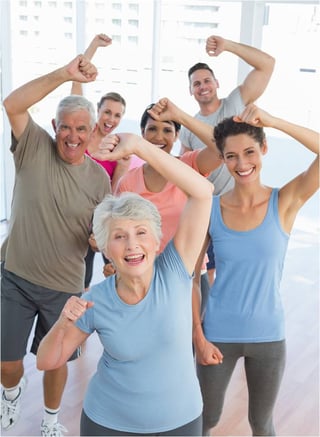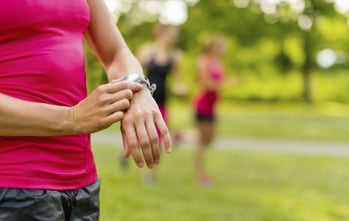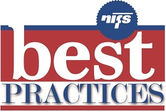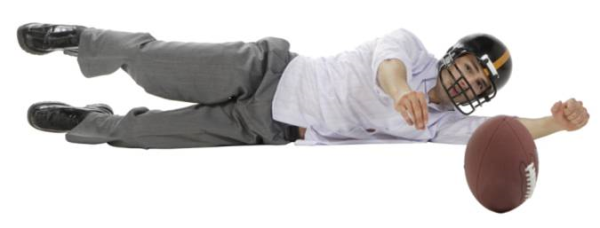 What’s better than chips and guacamole? Tacos and guacamole? Fajitas and guacamole? Or guacamole and a serving of guacamole with a little dish of guacamole on the side? Point is guacamole is amazing and what better way to celebrate the awesomeness of guacamole than Cinco de Mayo. If you plan on indulging in as much guacamole as I do this Cinco de Mayo then maybe a plyometric workout beforehand will keep your conscience at bay when asking your waiter/waitress for that third serving of guac. Here are my 5 favorite plyometric exercises for Cinco de Mayo:
What’s better than chips and guacamole? Tacos and guacamole? Fajitas and guacamole? Or guacamole and a serving of guacamole with a little dish of guacamole on the side? Point is guacamole is amazing and what better way to celebrate the awesomeness of guacamole than Cinco de Mayo. If you plan on indulging in as much guacamole as I do this Cinco de Mayo then maybe a plyometric workout beforehand will keep your conscience at bay when asking your waiter/waitress for that third serving of guac. Here are my 5 favorite plyometric exercises for Cinco de Mayo:
5 – Squat Jumps
5 – Power Push-Ups
5 – Split Lunge Jumps
5 – Heavy Med Ball Slams
5 – Burpees
*Repeat these 5 times through, if you aren’t sure of how to execute these exercises here is a rundown for you:
Squat Jumps – Start with feet shoulder width apart. Lower body into a squat by bending at hips with your back straight, pushing your glutes back while looking forward. Allow your arms to naturally swing back and with a quick pause at the bottom, push through your feet into a jumping motion. Swing your arms to straight up in the air, fully extending over your head. When landing, squat back to the lowered position and repeat.
Power Push-Ups – Start in push-up position with arms shoulder width apart. Keeping body straight, perform a push-up. On the way up, in an explosive motion, push your body up so your hands come off the ground. Resistance can be decreased by having knees on the ground.
Split Lunge Jumps – Stand with one foot forward and other foot back with knees bent slightly. Dip body down by bending legs lowering yourself toward the ground. Immediately jump upward quickly switching legs and landing with feet in opposite positions. Keep torso upright and hips straight forward. Repeat sequence with opposite leg movement.
Heavy Med Ball Slams – Hold a medicine ball with both hands and stand with feet at shoulder width apart. Raise the ball above your head fully extending arms overhead. Reverse the motion, slamming the ball into the ground directly in front of you as hard as you can. Receive the ball with both hands on the bounce and repeat the movement.
Burpees – Start standing with feet hip width apart. Squat down placing hands shoulder width apart on the floor. Jump both feet back into a push-up position. Perform a push up and immediately jump feet back into the squat position. Jump up from the squat position extending arms straight up. Land back on the ground and repeat. For an easier version, eliminate the push up, you can also step your feet out and back to eliminate the explosive movements.


 Exercise, as we know, is an essential part of living a healthy life—not only for the elderly, but for everyone. One common question I get is, “What exercises should I do?” Now, this is a loaded question. That’s going to depend on things like goal, fitness level, capability, and injury. But for the most part, I recommend that everyone follow basic guidelines for success when it comes to their fitness. Over the course of this blog, I discuss two of my guidelines for fitness. Not everyone is the same; therefore, one size doesn't fit all. But we are all humans, so one size does fit most.
Exercise, as we know, is an essential part of living a healthy life—not only for the elderly, but for everyone. One common question I get is, “What exercises should I do?” Now, this is a loaded question. That’s going to depend on things like goal, fitness level, capability, and injury. But for the most part, I recommend that everyone follow basic guidelines for success when it comes to their fitness. Over the course of this blog, I discuss two of my guidelines for fitness. Not everyone is the same; therefore, one size doesn't fit all. But we are all humans, so one size does fit most. 

 Are you looking to give back to the community or help others? Did you know that you could do this while exercising too? If you have a SmartPhone or access to the Internet, there are several free apps you can download or sign-up through. Each application has a different organization or fund that you have the option of helping! I researched and found the top rated opportunity, along with a few others I have heard great things about.
Are you looking to give back to the community or help others? Did you know that you could do this while exercising too? If you have a SmartPhone or access to the Internet, there are several free apps you can download or sign-up through. Each application has a different organization or fund that you have the option of helping! I researched and found the top rated opportunity, along with a few others I have heard great things about. Are you new to running or have you been a runner for some time now? Either way you may be experiencing the typical aches and pains, such as muscle soreness or blisters, but have you experienced the numbness and tingling in your feet while running? It feels as though you have pins and needles in your feet or like they seem to have ‘fallen asleep’ from this weight-bearing activity. If so, don’t get your shorts in a bunch. You may reconsider a trip to the doctor, but it will be okay. Promise!
Are you new to running or have you been a runner for some time now? Either way you may be experiencing the typical aches and pains, such as muscle soreness or blisters, but have you experienced the numbness and tingling in your feet while running? It feels as though you have pins and needles in your feet or like they seem to have ‘fallen asleep’ from this weight-bearing activity. If so, don’t get your shorts in a bunch. You may reconsider a trip to the doctor, but it will be okay. Promise! Are you looking for fitness tips, a little extra motivation or some exercise accountability? There’s an app for that! Over the past few years, health and fitness apps have grown and can provide information such as, distance and pace, strength, circuit and flexibility routines, estimate calorie expenditure, and some can measure your heart rate. Some apps will send daily fitness tips or motivational statements to help keep you on track with your exercise routine. But, if you’ve ever tried to search for health and fitness apps on your phone, you know how overwhelming it can be.
Are you looking for fitness tips, a little extra motivation or some exercise accountability? There’s an app for that! Over the past few years, health and fitness apps have grown and can provide information such as, distance and pace, strength, circuit and flexibility routines, estimate calorie expenditure, and some can measure your heart rate. Some apps will send daily fitness tips or motivational statements to help keep you on track with your exercise routine. But, if you’ve ever tried to search for health and fitness apps on your phone, you know how overwhelming it can be. Ten years ago I decided to run my first half marathon. I have never been much of a runner, so I wanted to challenge myself. I went straight to my local department store and bought a new pair of shoes and hit the pavement. After a few weeks, I started to notice some knee pain. It got worse as I went into longer runs and eventually my back started getting the aches as well. When the pain became too much, I went to see my physician. His first reaction was for me to buy new shoes and a pair of inserts. Could this really be the only reason for my excruciating pain?
Ten years ago I decided to run my first half marathon. I have never been much of a runner, so I wanted to challenge myself. I went straight to my local department store and bought a new pair of shoes and hit the pavement. After a few weeks, I started to notice some knee pain. It got worse as I went into longer runs and eventually my back started getting the aches as well. When the pain became too much, I went to see my physician. His first reaction was for me to buy new shoes and a pair of inserts. Could this really be the only reason for my excruciating pain?
 Aziza joined the Wellness Center when she started her employment in September. In three months she referred four new members to our Corporate Wellness Center and she says she is working on more. I am thrilled to have her as ambassador member of the Wellness Center and also admire her ability to motivate herself and her associates to get more active. Here is her story and hopefully she’ll get you motivated to get moving too.
Aziza joined the Wellness Center when she started her employment in September. In three months she referred four new members to our Corporate Wellness Center and she says she is working on more. I am thrilled to have her as ambassador member of the Wellness Center and also admire her ability to motivate herself and her associates to get more active. Here is her story and hopefully she’ll get you motivated to get moving too. attitude about these days. Here is what she says about her off days, “I am human, and I know that I will have my “off days” but you just forgive yourself and pick back up. When I get weighed in each week with Weight Watchers®, my number on the scale that day either makes me work harder or lets me know I am on the right track. I have come too far and refuse to let the scale go backwards. I am too determined and have worked too hard.”
attitude about these days. Here is what she says about her off days, “I am human, and I know that I will have my “off days” but you just forgive yourself and pick back up. When I get weighed in each week with Weight Watchers®, my number on the scale that day either makes me work harder or lets me know I am on the right track. I have come too far and refuse to let the scale go backwards. I am too determined and have worked too hard.”  Did you enjoy yourself a bit too much while watching the big game on Sunday night? Did you vow to stop at three chicken wings and one beer? Did the wings and beer turn into a dozen chicken wings, plus two pieces of pizza, and more artichoke spinach dip then you’d like to recall? Despite our intentions to practice some self-control, we all over-do-it with food and alcohol sometimes. Don’t let one night or even several days of poor eating habits discourage you from chasing after the goals you set for yourself this year.
Did you enjoy yourself a bit too much while watching the big game on Sunday night? Did you vow to stop at three chicken wings and one beer? Did the wings and beer turn into a dozen chicken wings, plus two pieces of pizza, and more artichoke spinach dip then you’d like to recall? Despite our intentions to practice some self-control, we all over-do-it with food and alcohol sometimes. Don’t let one night or even several days of poor eating habits discourage you from chasing after the goals you set for yourself this year. 
 I attended a webinar a few years ago that suggested that the holiday season now extends from Halloween until the first Sunday in February when we gather ‘round a screen and raise a beer to the football God’s to watch the “Big Game”.
I attended a webinar a few years ago that suggested that the holiday season now extends from Halloween until the first Sunday in February when we gather ‘round a screen and raise a beer to the football God’s to watch the “Big Game”.